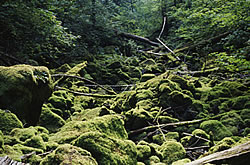Gauging biodiversity with lichens
With researchers continuing to identify new species on a regular basis, the exact number however remains unknown. What is known is that species are becoming extinct at an alarming rate, a phenomenon frequently attributed to human activity. The decrease in biological diversity, or biodiversity, could have drastic effects upon the delicate balance among ecosystems and their inhabitants. Aiming to reverse this trend, over 150 countries signed the Convention on Biological Diversity at the 1992 Rio Earth Summit. More recently, Europe has developed its own Biodiversity Strategy that endeavors to identify and reverse reductions in biodiversity. A project funded through the EESD Programme examined the potential of several different species as biodiversity indicators. The Swiss Federal Institute for Forest, Snow and Landscape Research (WSL) investigated lichens in particular. Lichens consist of a symbiosis between an algae and a fungus. On an evolutionary scale they have been present for millions of years and they exist in a variety of ecosystems around the globe. In the final analysis, lichens distinguished themselves from other species as ideal biodiversity indicators for a number of reasons. Due to their position in the ecosystem, lichens reveal information about the diversity of many other species, from plants to insects to small vertebrates such as birds. However, they are only weakly correlated to soil biodiversity. Lichens can be easily monitored all year round and since they are not mobile they are easily monitored in a short period of time. This is not so for other species. Butterflies, for example, go dormant for long periods while birds migrate to other regions during the winter. Finally, it was found that lichens can also provide feedback on land-use continuity, providing important indicators linking species fragmentation to abrupt changes in land-use. The WSL has assembled an extensive database of several hundred lichen species based on over one hundred and sixty thousand samples. The samples were collected from eight different European countries using a standard protocol. Land-use data is also included. Additionally, software tools for statistical analysis are available.







